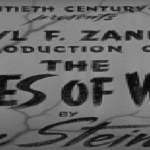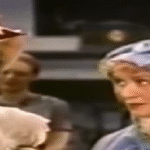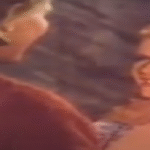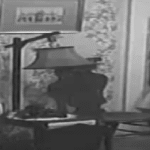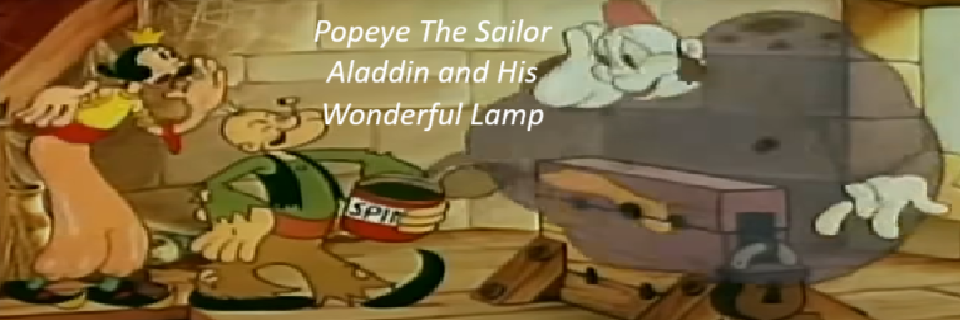In 1939, the beloved spinach-chomping sailor Popeye took a break from his usual brawling with Bluto over Olive Oyl to dive into a world of Arabian Nights fantasy with Popeye the Sailor – Aladdin and His Wonderful Lamp. Produced by Fleischer Studios and released by Paramount Pictures, this Technicolor cartoon is a delightful parody and retelling of the classic Aladdin tale, infused with slapstick humor, musical interludes, and the trademark antics that made Popeye one of the most enduring cartoon characters of the 20th century.
At nearly 22 minutes long, this two-reel special was longer than the typical Popeye shorts of the era and was part of a trio of color specials that marked a high point in Fleischer animation. It stands as a unique blend of traditional fairy tale and Depression-era American humor, a crossover that both honors and pokes fun at the story of Aladdin and the magic lamp.
A Storybook Within a Cartoon
The cartoon opens with a metafictional framing device: Popeye is working as an illustrator at the “Desert Pictures Inc.” animation studio. He begins sketching a story for a children’s book, and as he draws, the film shifts into the tale itself—with Popeye as Aladdin, Olive Oyl as Princess Olive, and of course, the nefarious magician modeled after Bluto.
This self-referential opening sets the tone for the rest of the cartoon, which is equal parts homage and send-up. The story closely follows the familiar beats of Aladdin and the Magic Lamp from One Thousand and One Nights, but with the Popeye twist: Aladdin (Popeye) is a lowly laborer who falls in love with a princess, stumbles upon a magic lamp, and uses its genie to win her hand—though not without plenty of comic detours.
Visual Style and Animation
As one of the few Popeye cartoons created in full Technicolor, Aladdin and His Wonderful Lamp is visually richer than the more common black-and-white entries. The backgrounds are lavish, evoking the exotic, storybook aesthetics of Arabian palaces, bustling markets, and mysterious caves filled with treasure.
Fleischer Studios was known for its fluid, expressive animation and distinctive character design, and this cartoon is no exception. The animators took full advantage of the longer runtime to build more elaborate scenes and gags. Characters bounce, stretch, and squash in classic cartoon fashion, and the set pieces—especially the Genie’s appearances and the magical battles—are handled with imagination and flair.
Particularly notable is the Genie himself, an energetic, shape-shifting figure whose visual gags rival the best of Looney Tunes or Disney’s later Aladdin (1992). Though nameless, the Genie is full of personality, often breaking the fourth wall and transforming in ridiculous ways, from a fire engine to a baseball player, bringing fast-paced comedy to the magical proceedings.
Humor and Satire
What separates Popeye the Sailor – Aladdin and His Wonderful Lamp from other adaptations is its comedic tone. The film constantly subverts expectations, blending the narrative structure of the Aladdin story with the irreverence of Popeye’s world. Olive Oyl’s portrayal of a melodramatic, clumsy princess adds layers of slapstick comedy. She swoons, flails, and screeches in classic Olive fashion, often needing rescuing not just from villains but from her own chaotic antics.
Bluto, ever the burly antagonist, plays the evil sorcerer with great theatricality, complete with menacing spells and booming laughter. His pursuit of power and Olive’s affections mirrors the recurring dynamic of the Popeye-Bluto-Olive triangle, just draped in Arabian garb. His exaggerated villainy is both cartoonish and oddly charming, adding to the parody of the source material.
The humor is delightfully self-aware. For instance, when Popeye is trapped in the cave with the magic lamp, he tries to open it by rubbing it—and then gives it a good whack, as if trying to start a stubborn lawnmower. The Genie emerges not with solemn grandeur but with showmanship and wisecracks, emphasizing the Fleischer style of gags over gravitas.
Music and Sound Design
The cartoon is punctuated with musical numbers and whimsical sound effects that heighten its fantastical tone. Olive Oyl performs a comically shrill song about being a “poor little princess,” while Popeye sings of his lowly status and dreams of love. The tunes are catchy, lighthearted, and firmly rooted in the vaudevillian style of early animation musicals.
Sound effects play a crucial role in the comedy, with exaggerated noises accompanying every punch, fall, and magical transformation. The Genie’s effects are especially fun—each time he appears, a new batch of zany sounds underscores his chaotic presence.
Popeye’s Signature Twist
Of course, no Popeye cartoon would be complete without a can of spinach. In this version of the story, even with the aid of the all-powerful Genie, Popeye finds himself overpowered by Bluto’s magic. But when all seems lost, he pulls out his trusty can of spinach—smuggled into the fairy tale, naturally—and downs it for his trademark strength boost.
What follows is a flurry of fisticuffs, cartoon physics, and visual puns as Popeye uses his spinach-fueled power to defeat the villain and save Olive Oyl. It’s a moment of classic Popeye formula inserted seamlessly into the mythical setting, and it works beautifully. The moral, as always, is that courage, persistence, and a little green vegetable can overcome even the darkest magic.
Legacy and Influence
Popeye the Sailor – Aladdin and His Wonderful Lamp holds a special place in animation history. It was the third and final Fleischer Studios “two-reeler,” following Popeye the Sailor Meets Sindbad the Sailor (1936) and Popeye the Sailor Meets Ali Baba’s Forty Thieves (1937). These specials showcased the studio’s creative peak, allowing them to experiment with longer formats, color, and storytelling depth that short cartoons didn’t always permit.
Though not as commercially prominent as Disney’s feature-length films of the same era, these Popeye specials demonstrated that cartoons could carry extended narratives while retaining humor and character charm. In many ways, they paved the way for the future of animated features.
This particular entry has also been remembered for its satirical take on fairy tales, a trend that would become more prominent in later decades with films like Shrek and Aladdin (1992). The Fleischer version of the Genie, with his hyperactive, shape-shifting zaniness, arguably foreshadowed Robin Williams’ take on the character more than 50 years later.
Conclusion: A Hidden Gem of Animated History
Popeye the Sailor – Aladdin and His Wonderful Lamp is a gem from the golden age of American animation—bold, funny, and visually rich. It showcases the brilliance of Fleischer Studios at their most imaginative, blending classic storytelling with irreverent comedy. While modern audiences might be more familiar with Disney’s polished versions of fairy tales, this Popeye parody offers something uniquely charming: a reminder that even the oldest stories can be retold with a wink, a grin, and a good helping of spinach.

